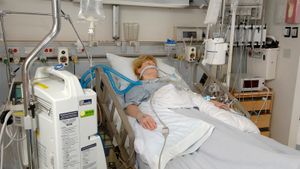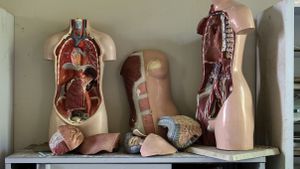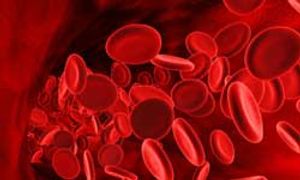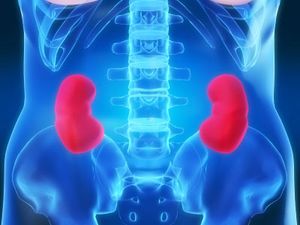Breathing and the Autonomic Nervous System
You don't have to think about breathing because your body's autonomic nervous system controls it, as it does many other functions in your body. If you try to hold your breath, your body will override your action and force you to let out that breath and start breathing again. The respiratory centers that control your rate of breathing are in the brainstem or medulla. The nerve cells that live within these centers automatically send signals to the diaphragm and intercostal muscles to contract and relax at regular intervals. However, the activity of the respiratory centers can be influenced by these factors:
- Oxygen: Specialized nerve cells within the aorta and carotid arteries called peripheral chemoreceptors monitor the oxygen concentration of the blood and feed back on the respiratory centers. If the oxygen concentration in the blood decreases, they tell the respiratory centers to increase the rate and depth of breathing.
- Carbon dioxide: Peripheral chemoreceptors also monitor the carbon dioxide concentration in the blood. In addition, a central chemoreceptor in the medulla monitors the carbon dioxide concentration in the cerebrospinal fluid (CSF) that surrounds the brain and spinal cord; carbon dioxide diffuses easily into the CSF from the blood. If the carbon dioxide concentration gets too high, then both types of chemoreceptors signal the respiratory centers to increase the rate and depth of breathing. The increased rate of breathing returns the carbon dioxide concentration to normal and the breathing rate then slows down.
- Hydrogen ion (pH): The peripheral and central chemoreceptors are also sensitive to the pH of the blood and CSF. If the hydrogen ion concentration increases (that is, if the fluid becomes more acidic), then the chemoreceptors tell the respiratory centers to speed up. Hydrogen ion concentration is heavily influenced by the carbon dioxide concentration and bicarbonate concentration in the blood and CSF.
- Stretch: Stretch receptors in the lungs and chest wall monitor the amount of stretch in these organs. If the lungs become over-inflated (stretch too much), they signal the respiratory centers to exhale and inhibit inspiration. This mechanism prevents damage to the lungs that would be caused by over-inflation.
- Signals from higher brain centers: Nerve cells in the hypothalamus and cortex also influence the activity of the respiratory centers. During pain or strong emotions, the hypothalamus will tell the respiratory centers to speed up. Nerve centers in the cortex can voluntarily tell the respiratory center to speed up, slow down or even stop (holding your breath). Their influence, however, can be overridden by chemical factors (oxygen, carbon dioxide, pH).
- Chemical irritants: Nerve cells in the airways sense the presence of unwanted substances in the airways such as pollen, dust, noxious fumes, water, or cigarette smoke. These cells then signal the respiratory centers to contract the respiratory muscles, causing you to sneeze or cough. Coughing and sneezing cause air to be rapidly and violently exhaled from the lungs and airways, removing the offending substance.
Of these factors, the strongest influence is the carbon dioxide concentration in your blood and CSF followed by the oxygen concentration.
Advertisement
Sometimes the respiratory centers go temporarily awry and send extra impulses to the diaphragm. These impulses cause unwanted contractions (hiccups). The same thing happens in unborn children; many pregnant women often feel their babies hiccup. This happens because the respiratory centers of the developing child's brain are working just like those of an adult even though they are not yet breathing air.










